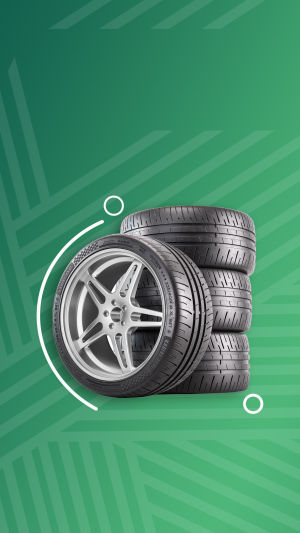Tires are annular elastic rubber products that roll on the ground and are assembled on various vehicles or machinery.
Usually installed on the metal rim, it can support the body, buffer the external impact, realize the contact with the road surface, and ensure the driving performance of the vehicle.
Tires are often used in complex and harsh conditions. They are affected by various deformations, loads, forces, and high and low temperatures during driving. Therefore, they must have high load-bearing, traction, and cushioning properties.
At the same time, high wear and bending resistance, as well as low rolling resistance and heat build-up are also required.
The role of tires.
1. The tire is the carrier of force transmission between the vehicle and the road surface. The driving force, braking force, steering force, etc. are transmitted through the tires, so as to realize the driving, braking, steering, and other operations of the car.
2. Support vehicle load. The load on the vehicle causes the tire to sink until the average pressure in the tire contact area equals the inflation pressure inside the tire.
3. Reduce and absorb the vibration and shock during the driving of the car, and avoid early damage to the auto parts caused by the violent vibration.
At the same time, it adapts to the high-speed driving state of the vehicle, reduces driving noise, and ensures driving safety, comfort, handling stability, and fuel economy.
Knowledge about tires.
1. Tires are consumables.
Tires are one of the consumables in a car. Tires are rubber products that age and they have a lifespan even if you don't use them.
Aged tires can cause minor cracks that cause slow inflation and, in severe cases, puncture while driving, causing the vehicle to lose control.
2. Spare tire.
There are two kinds of spare tires, one is a full-size spare tire, which is a spare tire with the same specification as a normal tire, and the other is a non-full-size spare tire, that is, a spare tire with a different size than a normal tire.
3. Change tires.
The impact of tires on car performance is great, whether it is dynamic performance or comfort performance.
Therefore, when changing tires, you can choose non-original tires according to your needs, and keep the tire specifications unchanged without changing the rims.
The maintenance methods for tires are as follows:
1. Regularly clean the stones in the tire gaps.
2. Avoid exposing tires to sunlight.
3. Always check the tire pressure. Look at the fuel tank cap of the car. There is a normal tire pressure value on the inside, which can be adjusted according to this value.
4. Pay attention to suspension maintenance.
5. Regularly check the front wheel alignment.
6. When driving, you should choose road driving, avoid objects that can puncture and scratch the tire, and avoid chemical spills from corroding the tire.
The role of tires is great.





